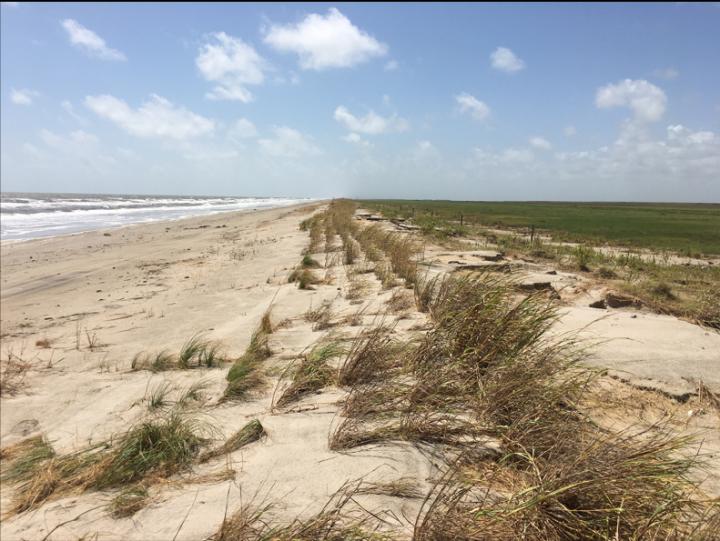
Credit: Texas General Land Office
Scientists from The University of Texas at Austin will embark from Galveston on April 14 in search of sunken treasure that holds the key to protecting Texas from storms and rising seas: sand.
About 80% of Texas’ Gulf shoreline is critically eroded, and the state is running out of easily accessible sand to rebuild and protect the shore, as the Texas General Land Office (GLO) has done for decades through its Coastal Erosion Planning and Response Act (CEPRA) Program.
“That’s where we come in,” said John Goff, a coastal geophysicist at the University of Texas Institute for Geophysics (UTIG), whose group will help CEPRA locate the sand needed to restore and reinforce the state’s beleaguered beaches and build a formal sand inventory for Texas.
The Texas General Land Office’s beach restoration projects have, for years, protected coastal communities, industries and ecosystems — quite literally — from the rising tide. For instance, when Hurricane Laura made landfall on Aug. 27, 2020, waves surged over coastal barrier islands and stripped away Texas beaches and dunes. A rare exception was a 3-mile stretch of shoreline at the McFaddin National Wildlife Refuge in Jefferson County, where dune ridges weathered some damage but largely stood fast against the storm. Their resilience was the result of a restoration project in 2017 that equipped the small portion of shoreline with sand.
When Goff and a team of UTIG scientists depart Galveston aboard the research vessel Tommy Munro, they will be searching for sunken sand deposits in sand-filled remnants of rivers that flowed into the Gulf of Mexico when sea levels were much lower than they are today.
Those ancient rivers and estuaries hold seams of easy to reach sand-ore, vital for the GLO’s coastal planning efforts. To both CEPRA and the UTIG scientists, the seams are also vital clues in deciphering what happened to the ancient coastline when sea levels began to rise.
“From a scientific standpoint, we’re looking back in time 8,000 years to understand how the shoreline and this whole estuarine system responded,” Goff said.
Ongoing sea level rise is a problem because it worsens coastal erosion and allows tropical storms to do more damage. During the 2020 tropical storm season, storm systems lingered in the Gulf of Mexico for days, causing extraordinarily high tides that ate away at the shoreline of the entire Texas coast. That much erosion damages infrastructure relied on by tourism, fishing, ports and industry, including evacuation routes. It also means higher insurance costs for local communities. All in all, sea level rise is bad news for the state’s economy and the 6.5 million Texans who live along the coast.
Extending the McFaddin model of restoring dune systems — not just beach berms — is a huge undertaking, but one that is necessary, and achievable, for building resilience against sea level rise, said Kelly Brooks, a CEPRA project manager who led the McFaddin project.
“Spreading sand on beaches may buy us 10, maybe 15 years depending on storms,” Brooks said. “But if we construct dune ridges and place more robust beach berm templates, then we can actually build something that is going to provide the shoreline with a buffer against high tides and sea level rise.”
To help locate the millions of cubic yards of sand the engineers need to restore and reinforce the state’s beaches, Goff and his team will create a high-resolution seismic map of the ancient Trinity River Valley and examine core samples from within the sand deposits. This will help the researchers estimate the volume and quality of the sand and predict the location of other offshore deposits.
The team will follow up with similar surveys of the sunken Sabine and Brazos river valleys, providing the state with a much needed inventory of its offshore sand resources and the scientists with the clearest picture yet of what happened thousands of years ago when the ancient coast was lost to the rising tide.
###
The UTIG project to survey the offshore ancient river valley systems is funded by the Texas GLO’s Division of Coastal Resources’ CEPRA Program and the Bureau of Ocean Energy Management. UTIG is a unit of UT’s Jackson School of Geosciences.
Media Contact
Constantino Panagopulos
[email protected]




